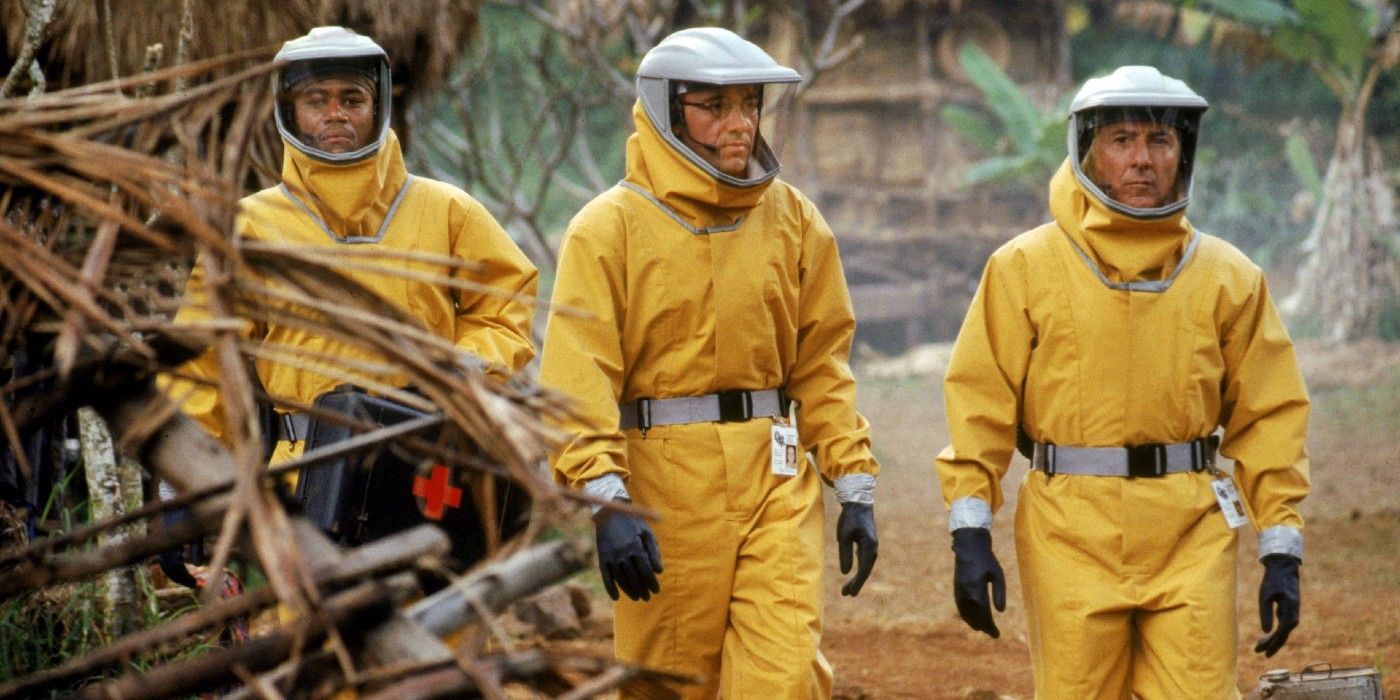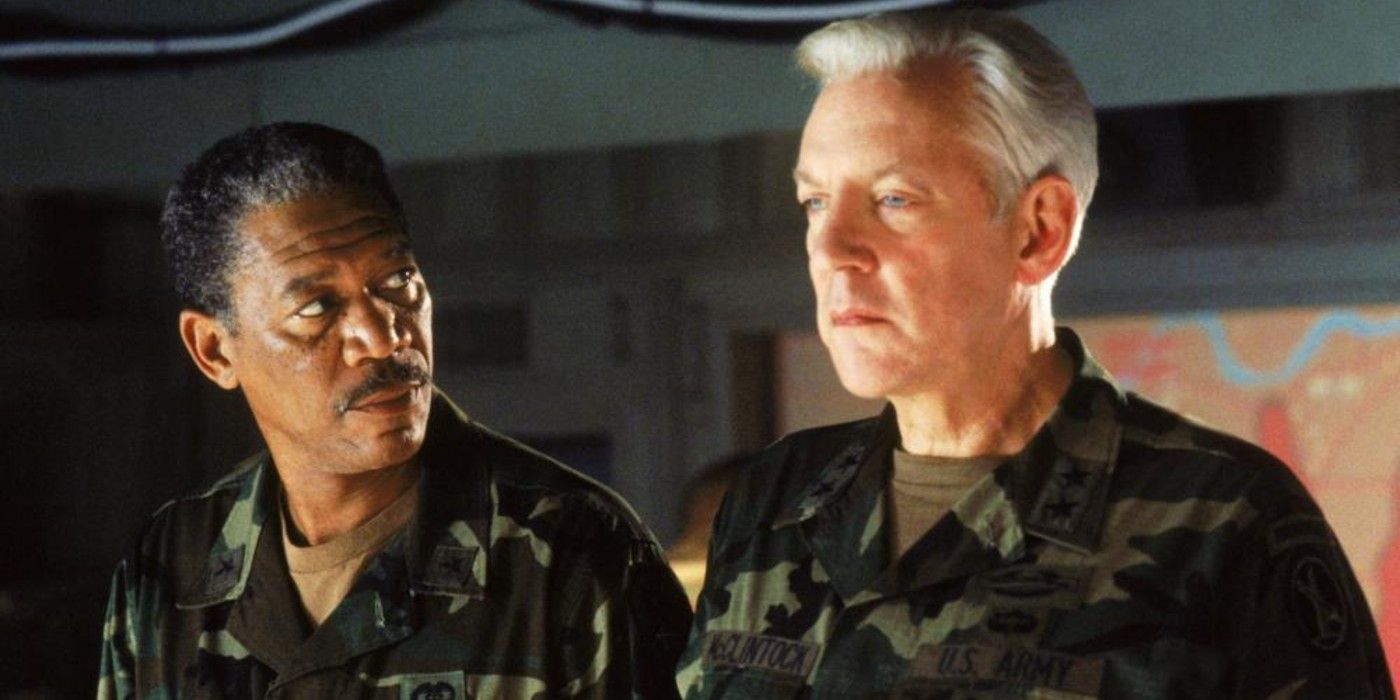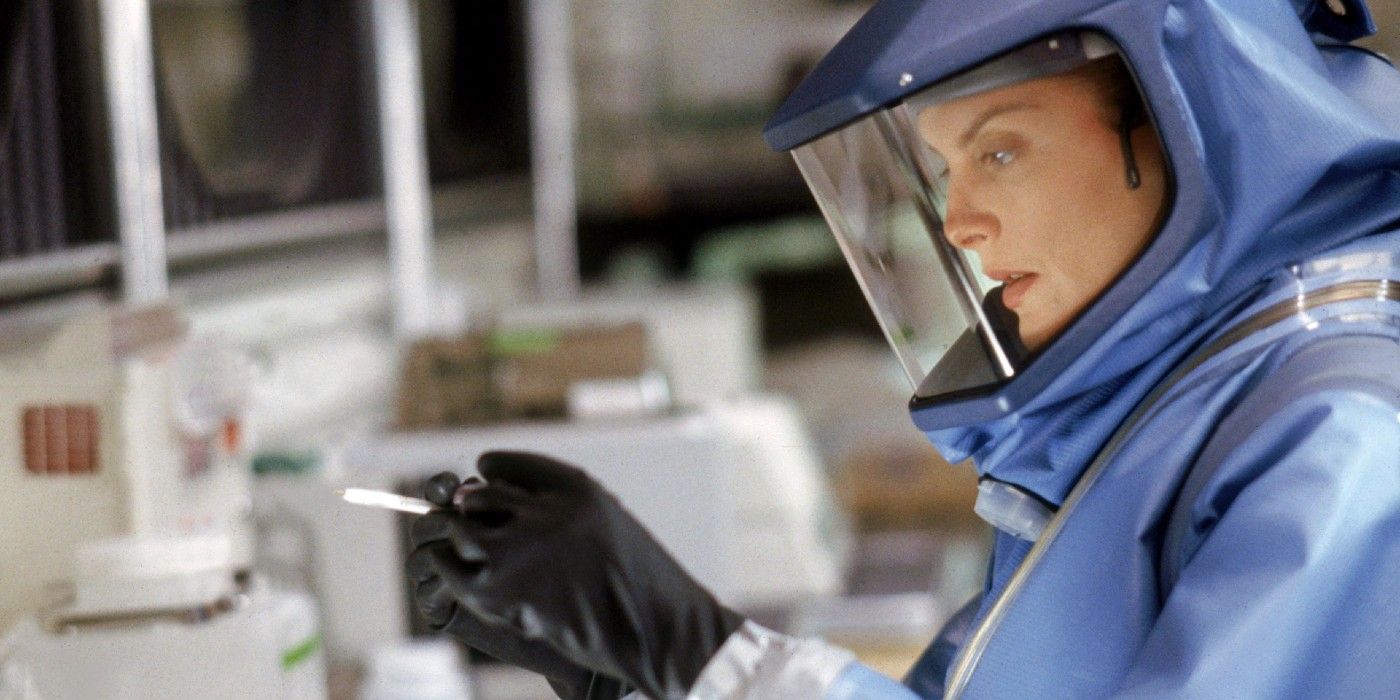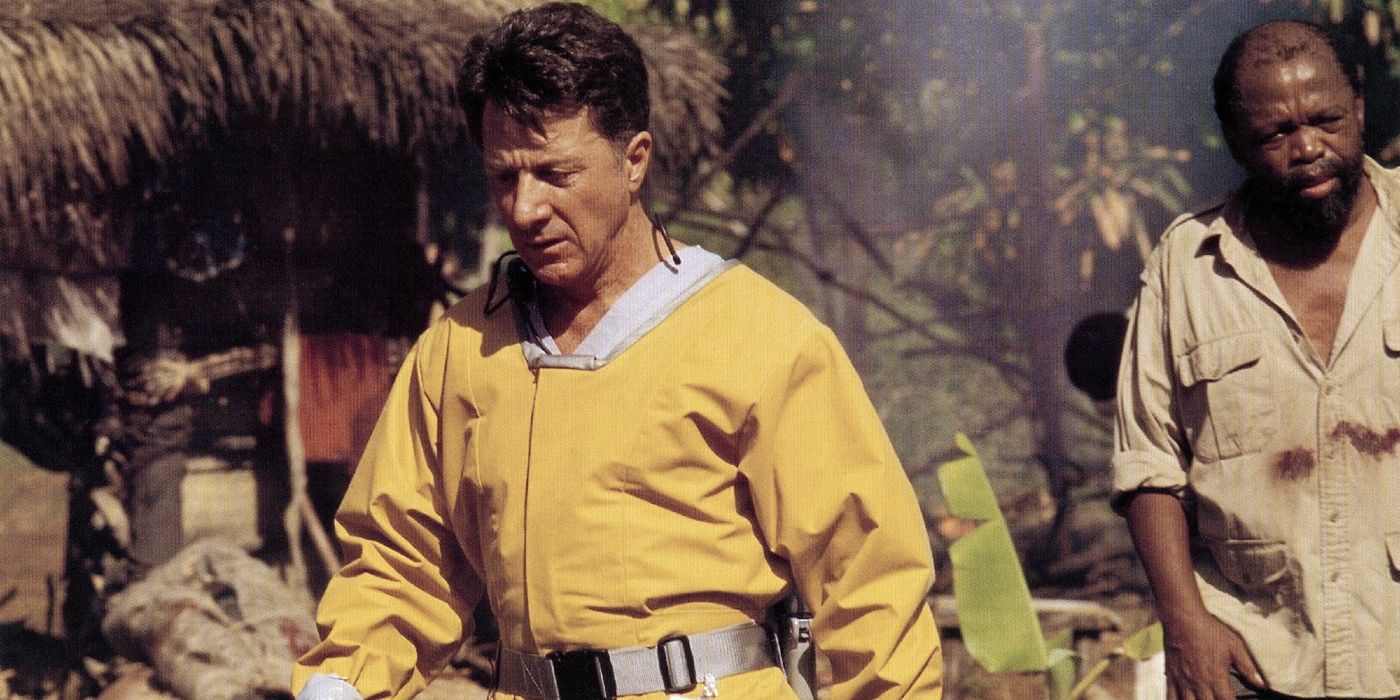Ebola was hot in the mid-90s. That virus was everywhere in 1994, like copies of Midnight in the Garden of Good and Evil or John Grisham’s The Client. This was due in large part to Richard Preston’s 1992 New Yorker article and subsequent novel The Hot Zone, a dramatization of a real-life Ebola outbreak in Reston, Virginia, right outside of the nation’s capital. It makes sense – America was between wars at the time, so many of its citizens had to look for things to be worried about, and a nightmarish flesh-eating plague is the kind of thing that captures people’s imaginations in a grim, apocalyptic panic sort of way. Plans to adapt the story into a film began almost immediately, with filmmakers like Wolfgang Petersen and Michael Mann considered for the project before Ridley Scott was ultimately tapped to direct a feature starring Robert Redford and Jodie Foster. Obviously, this version of The Hot Zone never materialized, although Scott did eventually produce a miniseries adaptation for National Geographic in 2019. However, Petersen went on to direct the 1995 film Outbreak, about a strain of the virus that infects a small town in coastal California. Released 26 years ago this month, Outbreak was partially inspired by Preston’s article, although it ramped up the dramatic tension and added considerably more Morgan Freeman.
Outbreak has an interesting relationship with real life events. It hit theaters in March of 1995, just a few months before a new major outbreak of the virus occurred in Zaire. It celebrated its 25th anniversary last year, during the same month the coronavirus pandemic began to shut down the United States. It became one of the most streamed films on Netflix during those early lockdown days, presumably because people were watching the gruesome disease and dystopian societal breakdown to reassure themselves that at the very least things weren’t going to get that bad. That assumption turned out to be partially correct – the coronavirus didn’t play out the same way as Outbreak in that nobody had to fly a helicopter into the path of an Army bomber to prevent the vaporization of an American town and all of its citizens. And the Army never drove tanks down Main Street U.S.A. to collect the infected and keep everyone else imprisoned in their homes. However, Outbreak did correctly identify the government's role as a frightening entity that allowed the virus to spread for nefarious reasons. Watching the film now, one year into an historic global pandemic that has killed almost 3 million people including over half a million Americans, it’s remarkable how much we took for granted about the country’s ability to deal with a serious public health crisis and how unprepared we were for the banal reality of state violence.
The primary conflict of Outbreak concerns two Army generals, McClintock (Donald Sutherland) and Ford (Freeman), who encounter a new strain of Ebola at a mercenary camp in Zaire in 1967. McClintock has the camp and all of its occupants incinerated, both to prevent the spread of the virus and to keep its existence a secret so that it can be developed as a biological weapon. When the virus re-emerges in an extremely sweaty Patrick Dempsey and his profoundly unlucky girlfriend, McClintock does everything in his power to keep the virus a secret, hampering efforts to study and contain it and withholding a vaccine developed for the 1967 strain. This allows the virus to spread out of control in the fictional town of Cedar Creek, California, which McClintock turns into a total police state and ultimately tries to nuke in order to keep the virus (and potential bioweapon) a secret and cover his negligent ass. Ford, having reluctantly followed McClintock’s orders for years, finally relieves McClintock of duty and has him arrested. A new vaccine is developed and the day is saved.
The reality of what actually happened during the coronavirus pandemic makes watching the extreme melodrama of Outbreak almost quaint. The horror dreamed up by Hollywood screenwriters saw a handful of high-ranking government officials willingly sacrificing human lives to preserve the viability of the virus as a biological weapon. They could not imagine a world in which the White House would repeatedly deny the existence of the virus, downplay the seriousness of the pandemic, and leave the states and their people to effectively fend for themselves. Outbreak presents the most frightening images of a hypothetical pandemic as a battalion of armed, faceless soldiers enforcing Martial Law in small town America. In reality, the enduring images of COVID-19 are all defined by the government's absence – overcrowded hospitals with insufficient supplies; shuttered businesses and people out of work with no debt relief or federal aid; anti-lockdown demonstrators burning masks and assaulting frontline workers attempting to enforce basic safety protocols.
The government’s response to a real-life pandemic was indeed terrifying, as Outbreak guessed. But while Petersen’s film predicted ruthless military action to contain and eliminate the threat in the name of the greater good, the sobering reality Outbreak could not have anticipated was that the federal government would do absolutely nothing. The filmmakers never considered that the president and his supporters would publicly denounce scientific experts and flagrantly distort the facts to try and convince the American people that the virus was a hoax manufactured by his political opponents. A major component of the film’s finale revolves around McClintock withholding the existence of a vaccine to convince the president to authorize the total destruction of Cedar Creek. As it turns out, McClintock needn’t have worried – he could’ve bombed California under false pretenses, or for no reason whatsoever, and the Trump Administration would’ve awarded him the Presidential Medal of Freedom.
Outbreak also exemplifies a major problem with the public’s perception of major health crises, which is that, essentially, we only take disease seriously when the disease itself looks scary. In a way, Ebola is a perfect Hollywood villain – its effects are grotesque and it has an extremely high mortality rate, killing over half of those it infects on average. But most diseases aren’t as outwardly dramatic as Ebola. The suffering they inflict is mostly invisible to everyone except the afflicted. Ebola might as well have been dreamed up by a grindhouse horror film, a relentless pathogen that essentially liquifies its victims from the inside out. But coronavirus just looks like the flu, a fact that was repeatedly used to downplay its severity even as the rate of deaths and new infections continued to rise. If it isn’t literally rotting the flesh off of your body, we just don’t think it’s that big a deal. Ironically, Outbreak is probably at least partially responsible for this misconception, because it introduced both Ebola and the idea of an unthinkable epidemic on American soil into the mainstream, and it has remained a popular film for the past quarter century. And judging by the current state of American political discourse, both the general public and our elected officials make an alarming majority of their decisions based on shit they saw in a movie one time.
Outbreak begins with a chilling quote by microbiologist and Nobel Laureate Joshua Lederberg: “The single biggest threat to man’s continued dominance on the planet is the virus.” This has always been the case; throughout history, we’ve seen dramatic examples of powerful civilizations brought to their knees by viral epidemics they lacked the knowledge or resources to combat. The filmmakers merely intended to craft an entertaining thriller by imagining a modern plague scenario involving a terrifying new virus, but the infinitely more insidious truth contained within Dr. Lederberg’s quote is one we’re just now beginning to realize – that the wealthiest, most technologically advanced civilization in human history would prolong an epidemic, sacrificing hundreds of thousands of lives in the process, because taking any action in the name of public health, including acknowledging the virus even existed, was politically inconvenient.
The events of the past year lend an almost Sorkin-esque quality of melodramatic naivete to a few pivotal scenes in Outbreak that neither Petersen nor the cast intended, in particular the moment when Dustin Hoffman’s character references the 1918 influenza pandemic by saying, ““What if there were men who could’ve stopped it, but didn’t? What would history say about them?” Those men exist, as it turns out, and they couldn't care less about how history will treat them.




